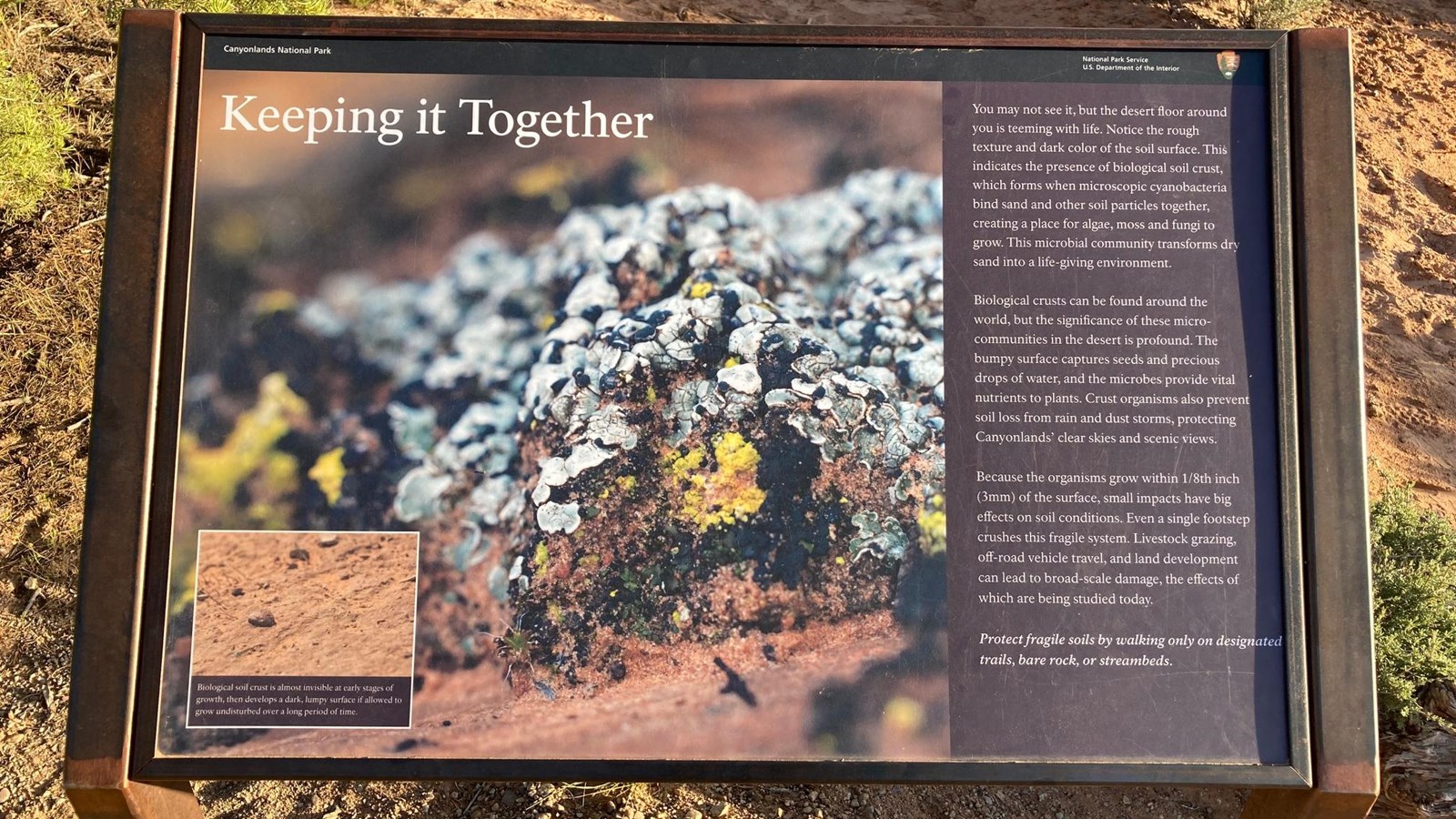Last updated: November 10, 2024
Place
Mesa Arch: Keeping it Together

J. Carver
Quick Facts
Location:
Island in the Sky
Significance:
Wayside Panel
Amenities
1 listed
Historical/Interpretive Information/Exhibits
You may not see it but the desert floor around you is teeming with life. Notice the rough texture and dark color of the soil surface. This indicates the presence of biological soil crust, which forms when microscopic cyanobacteria bind sand and other soil particles together, creating a place for algae, moss and fungi to grow. This microbial community transforms dry sand into a life-giving environment.
Biological crusts can be found around the world, but the significance of these micro-communities in the desert is profound. The bumpy surface captures seeds and precious drops of water, and the microbes provide vital nutrients to plants. Crust organisms also prevent soil loss from rain and dust storms, protecting Canyonlands' clear skies and scenic views.
Because the organisms grow within 1/8th inch (3mm) of the surface, small impacts have big effects on soil conditions. Even a single footstep crushes this fragile system. Livestock grazing, off-road vehicle travel, and land development can lead to broad-scale damage, the effects of which are being studied today.
Protect fragile soils by walking only on designated trails, bare rock, or streambeds.
INSET PHOTO: Biological soil crust is almost invisible at early stages of growth, then develops a dark, lumpy surface if allowed to grow undisturbed over a long period of time.
Biological crusts can be found around the world, but the significance of these micro-communities in the desert is profound. The bumpy surface captures seeds and precious drops of water, and the microbes provide vital nutrients to plants. Crust organisms also prevent soil loss from rain and dust storms, protecting Canyonlands' clear skies and scenic views.
Because the organisms grow within 1/8th inch (3mm) of the surface, small impacts have big effects on soil conditions. Even a single footstep crushes this fragile system. Livestock grazing, off-road vehicle travel, and land development can lead to broad-scale damage, the effects of which are being studied today.
Protect fragile soils by walking only on designated trails, bare rock, or streambeds.
INSET PHOTO: Biological soil crust is almost invisible at early stages of growth, then develops a dark, lumpy surface if allowed to grow undisturbed over a long period of time.
